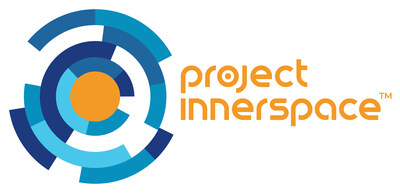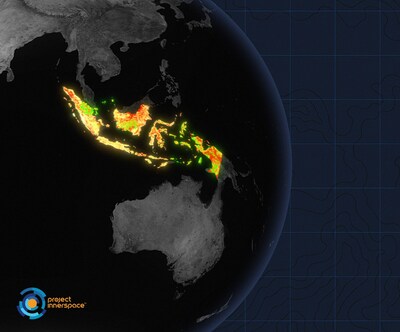Unveils the Opening Theme Song “saikai” performed by Vaundy
~Streaming Worldwide Only on Netflix from July 5th~
TOKYO, June 3, 2025 /PRNewswire/ — CyberAgent, Inc. today has revealed the second main trailer and additional cast announcements of the television anime of up-and-coming award winning author Mokumokuren’s “The Summer Hikaru Died” (original published by KADOKAWA, co-produced by CyberAgent and KADOKAWA, animation produced by CygamesPictures).
“The Summer Hikaru Died” is a hit horror manga series about an ordinary high school boy, Yoshiki, who experiences various mysterious incidents in his life with Hikaru, a mysterious being who imitates his best friend Hikaru Indo. The story of “whatever it is” and the boy’s madness has garnered significant attention, making it a must-see anime film.
The newly revealed second main trailer features the opening theme song “saikai” performed by Vaundy which is also unveiled for the first time. Additionally, comments from the new cast members, Yoshiki Nakajima as Yuta Maki and Shion Wakayama as Yuki Tadokoro have also arrived.
The Anime “The Summer Hikaru Died” will be available on Netflix worldwide from July 5th, 2025. We will continue to provide additional details.
Second Main Trailer: https://youtu.be/jWKO241TtdQ
- Vaundy chosen to perform the opening theme song!
The opening theme song will be performed by Vaundy, a notable artist leading Japan’s latest music scene! “saikai” filled with inspiration from reading the original manga, can be heard in the 2nd main trailer. The opening footage of the main story will start broadcasting and distributing from episode 2, so don’t miss it!
“saikai” by Vaundy
Music, lyrics and arranged by Vaundy
(SDR / Sony Music Labels)
- Comments from Vaundy
This time, I wrote down the opening theme song ” saikai ” for “The Summer Hikaru Died”. I made it into a song with the same uneasy feeling I got when reading the original manga, not knowing what would happen every time I turned the page. I hope it has become a song that challenges the music of anime in the future.
Who would you want to meet again if you had the chance?
- Vaundy Profile Information
A multi-talented 24 years old artist who handles all of his own lyrics, composition, and arrangement, as well as design, video direction, and self-production. He started posting songs on YouTube in the spring of 2019.
With catchy melodies like “Tokyo Flash” and “Fukakouryoku” and a wide range of genre songs, he quickly became a hot topic on SNS. He has been attracting attention as a symbolic figure of the “Reiwa” era in streaming music, with 17 songs exceeding 100 million plays, setting a record for the most by a Japanese male solo artist.
From February 2026, he will also be the youngest male solo artist in history to hold a tour in four major city domes (with an expected audience of about 300,000 in 6 live concerts).
With his natural voice that catches the ear and becomes addictive at first listen, and his wide-ranging song sense that suggests extraordinary talent, he is leading the Japan’s latest music scene.
- New Cast Comments Arrived!
Yuta Maki (CV: Yoshiki Nakajima)
Classmate of Yoshiki. A funster with a shaved head.
I’m Yoshiki Nakajima, and I’ll be voicing Yuta Maki.
Maki shakes up the mood of the story—in a good way! He uses all kinds of tricks (laughs).
In this “abnormal” world that clings to you like sweaty summer heat, doesn’t the “normal” daily life of Maki and Yuki offer a refreshing contrast?
Since the shocking first chapter of the manga, I’ve been drawn into this world.
I hope I can share that feeling with you soon.
Please look forward to the anime!
Yuki Tadokoro (CV: Shion Wakayama)
Classmate of Yoshiki. Childhood friend of Asako Yamagishi.
When I first read the manga, I was completely drawn into its unique atmosphere—how it captures the abnormal side of everyday summer life, quietly existing right next to the normal.
Even though the characters live like they’re walking a tightrope and have long left “normal” behind, that same unchanged normal life is still waiting for them at school.
I truly, truly love this world and its atmosphere.
I’ll do my very best to help bring that feeling to the anime.
- About “The Summer Hikaru Died”
A hit horror manga series about an ordinary high school boy, Yoshiki, who experiences various mysterious incidents in his life with Hikaru, a mysterious being who imitates his best friend Hikaru Indo. The story of “whatever it is” and the boy’s madness has garnered significant attention, making it a must-see anime film.
- Follow “The Summer Hikaru Died” for the latest news and announcements:
Official website: https://hikanatsu-anime.com/
Official X: https://x.com/hikaru_anime_en
- Introduction
In a certain village
Since their childhood, they have grown up together.
Yoshiki and Hikaru, childhood friends.
the sun shining down on them
the chirping sound of a crypto tympana facialis
Ice cream on the way home
Laughing over trivial things
One day in summer, no different from any other day
…… You’re not Hikaru after all, are you?
Half a year ago, Hikaru went missing in the mountains.
A week later, he came back on a whim.
The voice, the figure, the thing that looked like Hikaru
What was stirring inside…
“Hikaru is no longer with us. …… if that’s the case.”
Starting the days with “something” in the form of a friend,
The “same as usual” everyday life.
But at the same time…
Strange incidents begin to plague the village.
Falling into the unknown “something”
The curtain rises on a coming-of-age horror story.
- Key Visual
- Work Information
Original story: Based on the comic “The Summer Hikaru Died” by Mokumokuren, originally serialized in the YOUNG ACE UP published by KADOKAWA
Director/Series Composition: Ryohei Takeshita
Character Design/Chief Animation Director: Yuichi Takahashi
DORODORO Animator: Masanobu Hiraoka
Animation Production: CygamesPictures
Copyright: ©Mokumokuren/KADOKAWA/The Summer Hikaru Died Partners
Copyrights must be indicated when posting or using the image materials.
Original work information
Title: “The Summer Hikaru Died
Author: Mokumokuren
Previously published: Volumes 1-5 (Kadokawa Comics A)
Available on YenPress
https://yenpress.com/series/the-summer-hikaru-died












